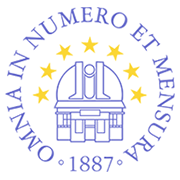IMPACT OF COULOMB CORRECTION ON THE NONADIABATIC TUNNEL IONIZATION IN AN ELLIPTICALLY POLARIZED LASER FIELD
Petrović, V.M. ,
Delibašić Marković, H.S.
,
Delibašić Marković, H.S. and
Petrović, I.D..
and
Petrović, I.D..
Publication
BOOK OF ABSTRACTS AND CONTRIBUTED PAPERS - International Meeting on Data for Atomic and Molecular Processes in Plasmas: Advances in Standards and Modelling, Page 84-85, https://doi.org/10.69646/aob241126
BOOK OF ABSTRACTS AND CONTRIBUTED PAPERS - International Meeting on Data for Atomic and Molecular Processes in Plasmas: Advances in Standards and Modelling, November 12-15, 2024, Palić, Serbia, Edited by Vladimir A. Srećković, Aleksandra Kolarski, Milica Langović, Filip Arnaut and Nikola Veselinović
Published by: Institute of Physics Belgrade
Published: 26. 11. 2024.
Abstract
Using a time-imaginary method rooted in the Landau-Dykhne model (Landau 1977) within the frame of the trajectory-based semiclassical approach, we developed an analytical model that investigates the impact of the Coulomb interaction between the atomic core and the escaping electron for a monochromatic elliptically polarized laser field on the tunnel ionization rate. We introduced an additional term in the imaginary part of the classical action due to the Coulomb interaction.This correction becomes substantially significant in the sub-barrier region, where the electron comes near the singular Coulomb core, influencing the complete tunneling dynamics. To accurately model these effects, we computed the electron trajectory considering the Coulomb forces and derived analytical expressions for both the initial and drift momenta (Petrović et al. 2023). Our results suggest that, in the whole considered ellipticity range, the Coulomb correction provides a significant, orders-in-magnitude, enhanced the total ionization rate without significantly altering its shape.Our results indicate that including the Coulomb correction not only modifies the energy distribution of the ionized electrons but also results in a narrower momentum distribution compared to models that omit this correction. These insights have significant implications for a broad spectrum of laser-matter interactions and could guide future research efforts in the field. - FULL TEXT available in PDF.




